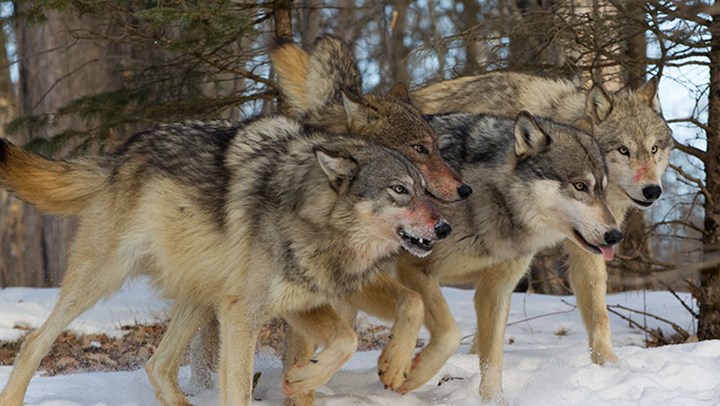
by Keith Crowley - Friday, March 2, 2018

Moose populations in far northeastern Minnesota have been taking it on the chin in recent years. At one time a trip to the Boundary Waters Wilderness and surrounding Superior National Forest regularly resulted in close encounters with the largest member of the deer family—but no more. A sighting of this iconic animal of the Northwoods is now a noteworthy event, and biologists are only just beginning to understand what caused the rapid decline.
According to scientists with the Minnesota Department of Natural Resources and with the U.S. Geological Survey, moose numbers have fallen by nearly 60 percent in the last decade and have been declining slowly for much longer. There are several reasons for the loss of moose in this wild boreal forest abounding with lakes and streams and bogs, but a new report from well-known wolf biologist Dr. David Mech, and co-authors John Frieberg and Shannon Barber-Meyer, shows a direct correlation between the rise in gray wolf numbers and the decline of moose in a long-term study conducted in an 800-square-mile section of the state near Ely.
Mech’s report does not say that wolves alone are responsible for the dramatic decline in moose populations, but he determined that wolves have a major impact on moose-calf survival. The new study states, “We do not claim that wolf numbers only influence moose population during declines or that wolves are the only factor affecting moose numbers.” But the report clearly indicates a correlation between wolf numbers and the moose decline.
As recently as 2006 there were an estimated 9,000 moose in the study area. By 2015 that number declined to fewer than 4,000. Changes in habitat and diseases have also contributed to the moose decline, but Mech and his co-authors give clear evidence that moose-calf mortality can be directly attributed to wolf numbers in the survey area. According to the study, “Calf population ratios from 1985 to 1997 and from 2005 to 2016 were inversely related to wolf numbers in the wolf-study area the previous winter both as wolves increased and decreased in abundance.”
Mech’s study concludes that wolf numbers have declined in the last few years as they have run out of moose to eat. This is no surprise considering that there are few whitetail deer in the study area and, besides smaller prey like snowshoe hares and voles, other potential wolf food is in short supply in that area. Wolves need large quantities of meat to thrive, and since moose are really the only big game in town, the wolves have effectively eaten themselves out of house and home. It’s not the first time. The same pattern was seen in the mid-1990s as wolf populations skyrocketed and moose all but disappeared from certain areas of prime moose habitat.
Ideally, these fluctuations in both moose and wolf populations would even out in the long term, but now other factors may prevent a moose recovery. Besides wolves, moose now also must contend with an increasing prevalence of parasites, along with deadly diseases like brain worm and liver flukes. Ultimately, they may not have the core numbers to recover as they have in the past.
Nevertheless, a decreasing wolf population is good for Minnesota moose. According to the report, “… our new and revised data signal a critical downward trend in the wolf population in our study area and an apparent response by moose.”
Mech further states, "It will take a few more years to determine if northeastern Minnesota moose numbers are increasing. However, there are already enough years of data to tell that the decline has stopped, now that wolf numbers have dropped."
This lends credence to the belief by many biologists both at the state and federal levels that a controlled wolf hunt in moose country would see moose numbers rebound. Mech would like to test that belief, stating, "If wolves are removed from the federal Endangered Species List and the state allows harvesting, that would allow a test of the effect of wolves. Regulated wolf harvest could be allowed in part of the moose range and total protection in a comparable part. Then differences in moose demographics could be measured."
As of now, wolves are still protected under the Endangered Species Act, but state management of wolves is sure to appear in the courts again.
In the end, the current decline in wolf numbers in northeast Minnesota provide a ray of hope for the struggling and iconic moose of the Northwoods.
E-mail your comments/questions about this site to:
[email protected]
Proudly supported by The NRA Foundation and Friends of NRA fundraising.
